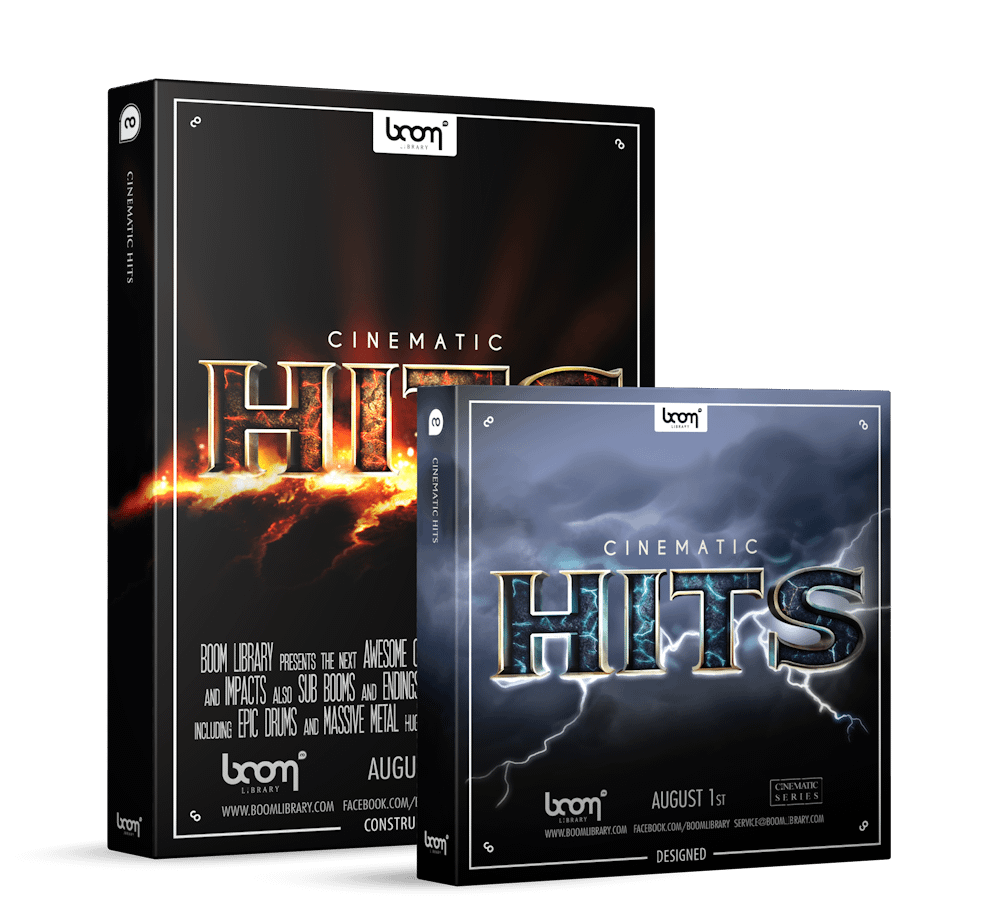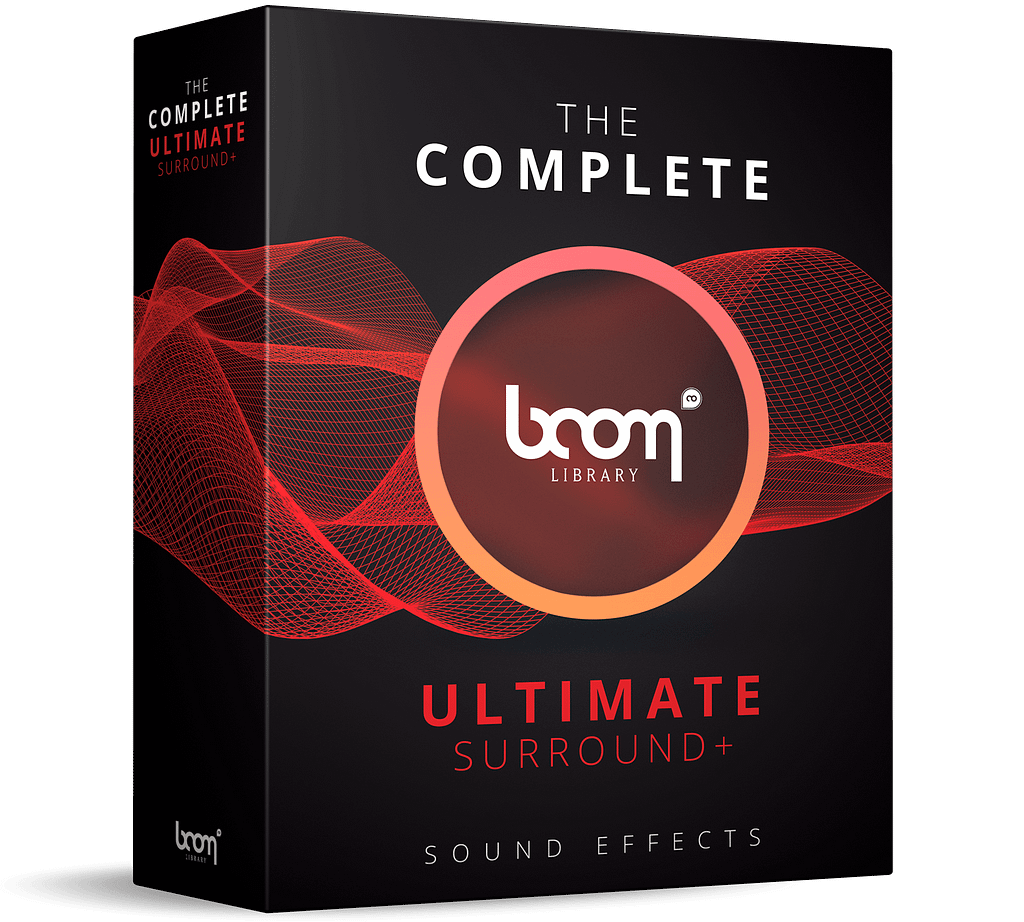
Sound designer John Chominsky was sitting at his LA desk at Atlantis Group Recording when he received a call. It was from a past client of his. “Did you hear? You won the contest!” It was for a Society of Voice Arts and Sciences award for a short radio commercial he had done the year before for Amazon’s The Wilds. He was surprised. He didn’t enter it himself and he had also made a kind of challenge when doing it.
John’s radio spot for The Wilds, using only BOOM Library FX over the music and voiceover
THE CHALLENGE
He had decided to do a radio commercial with only free BOOM Library sounds that he got from the monthly newsletter.
“When we were talking about the project over the phone, I had this vision in my head,” John shares. “Then they started sending me samples and I’m like, ‘I want to do something bigger.’ But a lot of sound libraries I had were a bit older. They didn’t have that same boom, excuse the pun. They didn’t have that modern video game or movie kind of sound… I had signed up for the newsletter that BOOM had and every month they give you free sound effects… because you’re just getting a small batch or a handful every month, it’s really easy to actually find the time to literally listen to them all. When I looked at the script, I had so many sounds that I needed or that would fill in the holes from the elements the television production company gave me.”
“So I just literally thought of some silly little challenge for myself. I was just going to use whatever sound effects I could get out of this free BOOM folder and implement them into the radio commercial. There was a plane flyby, some water gurgle thing, an Aztec death whistle, and a whole bunch of cinema impact and swirl sounds. I maybe used about a dozen sound effects in this 32 second radio commercial. It was funny, I made the commercial and I thought it was just another job.” He never even knew that his client submitted it to an award show until he was told he won it.
ATLANTIS GROUP
John founded his studio, Atlantis Group, located in Santa Monica/Los Angeles, California, nearly two decades ago. He had just quit a nice studio job in LA to take up his own thing. “My friends were like, ‘What are you doing? You’ve got such a cush job and you’re putting yourself out.’ I was just excited about challenging myself. As silly as it sounds, I don’t like getting comfortable. I don’t like things just getting boring or monotonous. I’m not just trying to get through the day.” John is ever an optimist, thinking that there are better things he can be doing if things are going too slow.
John’s studio works a lot with voice overs and often does demo jobs. He records the sample as though it’s from a piece that they’ve already done, and tries to make it sound like a legitimate past project, rather than something new. For this he uses a lot of BOOM Library and other sounds.
“It’s so exciting to paint these little scenes,” John says, “and again in that little 90-second span to go to six different unique environments or places that really help that voice jump to space or underwater or in the future or wherever.”
He’s able to create such vivid environments because of the high quality of sound effects that he has access to.
“I always want whatever they are going to present to these video game developers to sound as authentic and real and amazing as possible. I’m always glad if that sound design portion helps sell the package or if the sound does a good job that helps sell the actor at the end of the day. That’s what I’m really trying to do. It’s the actor’s business card.
“The artist is the painting, they’re why you go to the museum… but we do the framing, the lighting, the ambiance. I’m always just trying to frame that voice over artist in the best way I can, and painting that picture with sound is so much fun for me.”

THE AMAZON SHOW
Normally when John works on a project like commercial for The Wilds, his office is full of people. There are voice actors in the booth, representatives from the advertising agency, the script writer or the producer, all in his office squeezed in behind his desk. He landed the Amazon project though during Covid.
“I remember specifically doing this from home,” John told us. “I think that’s why I also got an opportunity to be creative with the sound. There was no one sitting over my shoulder and I got to play around.
“I think the first thing is I always consider it as the skeleton. I try to always think there has to be a foundation to the spot, especially when it when it comes to something where I personally maybe want to be creative. Sometimes a client is less enthusiastic about being creative. They’re all about the marketing or getting that message readout and me being an artist or a sound designer, I have some more artistic visions of it, so I think I always have to make sure that the structure, the basics of the spot, are solid and then I almost think of [the extra sound design] as the frosting. It’s like different flavors of decorations on top, so it’s really easy to peel them back.”
John does most of his work on ProTools and keeps his DAW structured so that he has several variations saved right on the file, available by simply muting one object on a track or another. “I don’t delete or erase anything. I can leave lots of different options in there. That’s the one thing I learned with advertising, whether it’s a radio commercial or a TV commercial. And there’s always so many versions that come out too, there’s the ‘Coming soon,’ ‘Coming out now’, ‘Tune in for the next episode’, and there’s the TV version, the Internet. I always start with my core elements and then from there I try to put as much exciting stuff to decorate it as best I can, but I try to definitely be as flexible as possible. In the world of advertising, there are a lot of cooks in the kitchen, and a lot of people like to provide feedback, and I want to make sure that I can always accommodate their wishes and always interpret their wishes.”

THE BOOM SOUND
“[Other libraries] don’t have that modern video game or movie kind of sound,” John tells us when discussing BOOM Library.
“Take the world of music, you can listen to a song from the 80s and it has a sound. You listen to a song from the 60s, it has a sound. You listen to something on the radio that’s on a hits channel it has a sound and if you listen to even the Top 40s hits this year versus the Top 40s hits three years ago, they sound different. One of the real key elements is that things are evolving. There’s a style, especially if you want to work on a cutting-edge project. I think the one thing that attracted me specifically to BOOM was if you go to their website and you watch some of their videos and listen to some of the samples where they’re demonstrating one particular library like Cinematic Hits or Monsters & Beasts or what have you. They all sound like a video game that my kids would be playing today or a movie that you’d be watching today. It doesn’t sound stale or dated. It sounds exciting.”
DISCOVERING BOOM
He had discovered the depth of the BOOM sound when he first signed up for the BOOM newsletter and started collecting the free sounds that we give out every month (interested? Sign up here).
“It’s like a drug dealer that gives you some free and then you’re hooked. It’s like test driving a car; as soon as you get behind the wheel, you take it out for a little bit. That’s half the sale, right? So I think that’s what happened with me.”
He was keeping all those files from the newsletter over the year, and when he got the project from Amazon, he did his challenge and surpassed it. And not only that, he won the SOVAS Award with that radio spot that he sound designed.
“That’s the one thing that made me make the jump and I wound up buying the Complete BOOM Basics. If I can win sound design awards off the little freebies you guys send me, then why don’t I have your full library here at my disposal? So honestly, without kidding, it’s about a year-and-a-half since I bought it and that’s my go-to library. I love it.
“And then BOOM came out with this brand-new library, BOOM ONE. I’m like, ‘I need this’. As silly as it sounds – I’ve been an audio engineer for a little over 30 years, so it’s so exciting when new stuff comes out. My wife teases me, ‘How many microphones do you need?’ or ‘don’t you have a plugin that does that already?’ or ‘How many EQs and compressors are there?’ But you get new sounds or you get new software you can or you take on some new challenges. And some new toys, and that’s what keeps it exciting for me. So 30 years later, I still feel like a little kid does on Christmas morning playing with a bunch of new toys.”















































































































































































































































